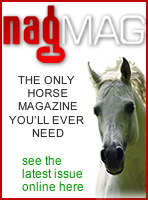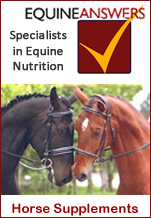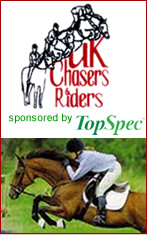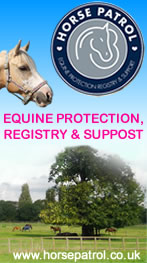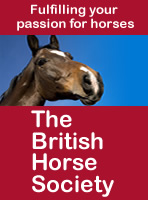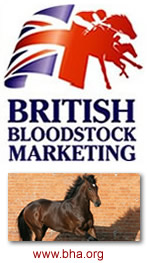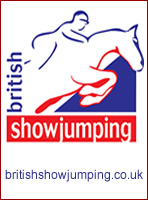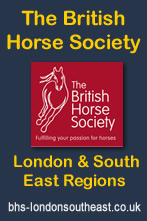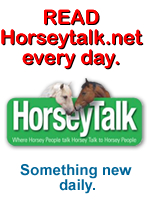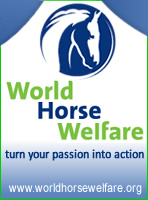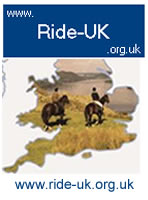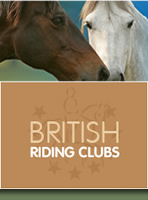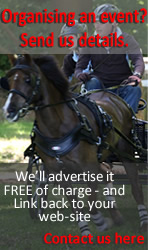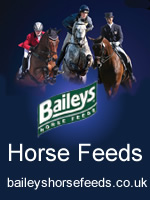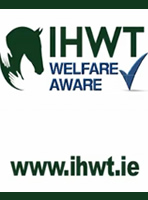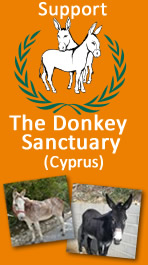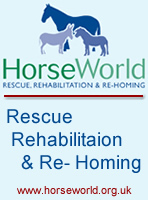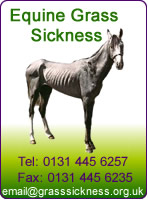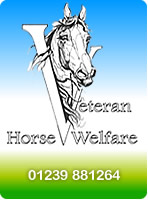
Horseytalk.net/Hoofbeat EXCLUSIVE
RIGHTS OF WAY WATCH
Cattle attacks. Riders rights
 More
and more commons, heath and open lands are being grazed by cattle.
More
and more commons, heath and open lands are being grazed by cattle.
More and more riders are coming into contact with cattle.
There are more and more reports of horses and riders not to mention dog walkers, ramblers and just ordinary walkers being attacked by cattle.
What does the law have to say about cattle attacks on land with public rights of access?
Clive Williams, Sustainable Access Team
Leader at Neath Port Talbot CBC,
whose wife was attacked by cattle five-years ago, explains.
Cattle attacks on land with public rights of access.
Advice for Countryside Access Managers.
1. Introduction
It is difficult to prove that attacks by cattle are increasing, but anecdotal evidence suggests that this is the case. Cows with young calves are the major problem, not bulls, which are much less commonly found in public access areas. Bulls are also regulated to some degree by legislation, but the legislation does not apply to cows. Cows are at their most protective in the first six weeks of the life of the calf, and this is the time when they are most likely to be potentially dangerous. In the majority of reported cases, dogs have been present, and are clearly regarded as a threat by cows with young calves, even if they have not worried or attacked the cattle. However, members of the public have also been attacked when no dogs have been present.
Attacks which cause serious injuries, or death, have to be reported to the Health and Safety Executive (HSE), and these incidents are of course recorded.However, there is no record of attacks causing minor injuries, or near miss incidents where members of the public escape without injury, and then fail to report the matter.
It appears that cattle from continental breeds are more temperamental than traditional British breeds, although this is again based on anecdotal evidence. These breeds are increasingly common on access land in England and Wales, and Limousin is often quoted as a particularly difficult breed, although there are no statistics to support this view. Modern farming methods may be another factor behind increased attacks, because there is often less direct contact between cattle and their handlers.
Some examples of cattle attacks which have occurred in recent years are provided in Appendix 1 below.
2. Relevant Legislation.
Wildlife and Countryside Act 1981, Section 59
The only legislation that relates specifically to cattle and public
access is Section 59 of the 1981 Act. This refers to the keeping of bulls
in fields with public access, it does not apply to cows with calves,
and has not been amended to reflect the increase in continental breeds
and cross breeds now kept in Britain. The requirements of the Act are
based on the old assumption that beef bulls are more docile than dairy
bulls, but this may no longer be a wise assumption.
Section 59 Prohibition on keeping bulls on land crossed by public rights
of way.
This section of the Act makes it a criminal offence to keep certain categories
of bull in an enclosure where there is a public right of way. It is legal
to keep a bull in such an enclosure if it is:
- less than 10 months old,
- it is not of a recognised dairy breed, and is at large in a field in which cows or heifers are at large.The recognised dairy breeds listed in the Act are; Ayrshire, British Friesian, British Holstein, Dairy Shorthorn, Guernsey, Jersey and Kerry.
This section of the Act does not apply to CROW access land, or common land, but the legislation outlined below will apply in those circumstances.
Occupiers Liability Act 1957
Under this Act, occupiers owe a duty of care to any visitors they have invited onto their land. This duty of care applies to the landowner or any other person temporarily in control of the premises, such as a tenant. The duty does not extend to protection from natural features of the land such as cliffs, but applies to any structure or feature created by the occupier, or to any activity carried out by the occupier.This Act does not apply to occupiers of land which has been designated as access land under the CROW Act.
Occupiers Liability Act 1984
This Act requires occupiers to provide a duty of care to persons who are not visitors, i.e. trespassers. It again applies to hazards created by the occupiers, rather than natural features of the landscape, and it is a lower duty of care than that which applies to visitors under the 1957 Act. It may be a defence for an occupier to show that:
- it was not reasonable to know that the hazard existed,
- it was not reasonable to expect anyone to be in the vicinity of it,
- it was not reasonable to expect protection from the type of hazard in question.
Occupiers owe this lower duty of care to members of the public using access land designated under the CROW Act. The Government did not wish to increase occupiers liabilities on land to which there were no previous access rights, in case it would lead to claims for compensation. If a person is attacked by a cow in a field where there are no public or permissive access rights, a landowner may consider that it was not reasonable to provide protection from the hazard. However, due to the requirements of health and safety legislation, this defence may not be entirely successful.
Health and Safety at Work etc Act 1974
Many landowners are unaware that this Act has a much wider application
than the traditional workplace situation such as a factory or mine. The
inclusion of ‘etc’ in the title of the Act was not for nothing!
Section 3 of this Act places a duty on employers and the self employed
to ensure, as far as reasonably practicable, that they do not expose
their employees or other persons to risk. HSE advice specifically states
that this section of the Act applies to keeping cattle in fields with
public access. The vast majority of landowners will either be employers,
or they will be self employed, and they have to ensure that they take
reasonable steps to ensure that the public are safe from their activities.
In the small number of instances where a public path crosses private
land such as a garden, and the owner is not therefore an employer and
is not self-employed on the premises, that person will still have a duty
of care under the Occupiers Liability Act 1957.
Management of Health and Safety Regulations 1999
Under Section 3 of these regulations, employers and the self employed have to carry out risk assessments to ensure that their activities do not endanger persons other than their employees. Employers with five or more employees have to record the findings of their risk assessments, but below that number of employees, there is no requirement to provide written evidence of the assessment. Landowners need to know that if a member of the public is seriously injured on their land, HSE have to be informed. This is because employers and the self employed have a duty to report injuries which have occurred to persons using their premises, under the Reporting of Injuries, Diseases and Dangerous Occurrences Regulations (RIDDOR) 1995. RIDDOR applies in the following circumstances:
- When a person suffers a fracture, other than to fingers, thumbs or toes,
- When a person has to be taken to hospital from the scene of an accident,
- When a person has to be admitted to hospital for 24 hours or longer,
- When a person is killed
The first thing the HSE will look at is the adequacy of the risk assessment
and if this falls short of requirements, enforcement action will be considered.
In the worst cases where a fatality has occurred, the police will carry
out the first investigation. Provided that there has been no wilful attempt
to endanger life, it is then handed over to the HSE to continue the investigation.
Enforcement action will only be taken where a serious failure to protect
public safety has occurred, but lesser failings can be subject of a requirement
to take further safety precautions. Failure to comply with the 1999 Regulations
can provide strong evidence of negligence in support of civil claims
for compensation, even in cases where the HSE has decided to take no
formal enforcement action.
The HSE publication: “Cattle and public access in England and Wales” provides
specific advice on practical measures that can be used to reduce risks,
and this can be downloaded from the HSE website. There are still some
concerns about the section on appropriate warning signs, but overall,
this is a good document to recommend to landowners who are worried about
this issue.
The Animals Act 1971
Under Section 2(1) of the Act, the keeper of any animal which belongs
to a “dangerous species” is strictly liable for any damage
it may cause. The keeper of an animal not belonging to a dangerous species
is also strictly liable under Section 2(2) of the Act in certain circumstances.
Cattle, horses, dogs and rams fall into this category under the Act.
The “keeper” is defined as the owner of the animal, or a
person who “has it in his possession”.
The effect of this part of the Act was considered by the House of Lords
in the Mirvahedy v Henley case in 2003, when it was held that the keeper
of such an animal is always strictly liable for any injuries it may cause.
That liability may be reduced if it can be shown that the injured person
did something to provoke or upset the animal, and this contributed to
the cause of the accident. This would be the case, for example, if a
member of the public was attacked by cattle after allowing a dog to chase
or attack them in a field with public access. A landowner would have
to have very good evidence of contributory negligence, however, in order
to reduce the strict liability under the Act. Independent witnesses to
these incidents are rare, and it is usually impossible to prove contributory
negligence.
Landowners have become increasingly concerned about the implications
of the House of Lords decision on strict liability, due to:
- The number of claims for compensation for personal injury being lodged,
- Owners of cattle and horses now face higher costs for public liability insurance cover,
- Trekking centres are finding it difficult, or at least very expensive, to arrange public liability insurance cover for their operations,
- Owners of CROW Act access land are concerned that liabilities under the Animals Act have not been reduced, even though they now have to allow the public on their land. The legislation is not consistent, because liabilities under the Occupiers Liability Act 1957 have been reduced to the level which applies to trespassers under the 1984 Act.
In recent years there has been strong lobbying from landowner representative bodies to secure an amendment to Section 2 of the Animals Act in order to reduce keepers’ strict liability. This has been successful because DEFRA is now considering an amendment to the Act, and this is currently subject of a consultation exercise.
Landowner responsibility under civil law.
Landowners need to be mindful of the fact that civil claims for compensation inevitably follow accidents causing personal injury to members of the public. They particularly need to consider the following:
- If a landowner commits an offence under the Occupiers Liability Acts, or under health and safety legislation, the offence itself does not create a civil liability. However, it is very good evidence that negligence has occurred, and this can provide a sound basis for a civil claim for compensation on behalf of the injured party.
- The keepers of farm animals are strictly liable under the Animals Act for any injuries caused by their animals, and it is often difficult to prove there has been any contributory negligence. It is now very hard for the keepers of farm animals to counter any claims for personal injury if a member of public is injured when exercising a statutory or permissive access right.
3. Cattle attacks – the role of the access authority
Attacks on public access land
Minor Incidents
If an access authority is informed of a cattle attack on a public right
of way, or on access land, any action to be taken by the authority will
depend on the severity of the incident. The first thing to establish
is whether or not the attack involves a bull which is prohibited from
being in a field with public access. This will be very rare, but if it
were to be the case it would be a clear criminal offence, and the matter
can be referred to the police and HSE.
If a member of the public is chased and frightened by cattle, or where
only minor injuries are incurred, the role of the authority may be simply
to discuss the matter with the cattle owner and, if necessary, issue
advice on access management. However, it should not be automatically
assumed that the cattle attacked without provocation, and the circumstances
need to be explored.
Serious Incidents
If more serious injuries have been incurred, it should be determined
whether or not they resulted in the person being taken straight to hospital,
and/or kept in hospital for more than 24 hours., or if they include fractures
other than those to fingers , thumbs or toes. If that is the case, the
cattle owner has a duty to report the matter to the HSE under RIDDOR,
and the authority can check that this has been done. Fatalities, of course,
have to be reported to the police who will carry out the initial investigation.
The HSE will establish whether or not there have been failures to comply
with health and safety legislation, and if that is the case may take
enforcement action against the cattle owner. Alternatively, HSE may instruct
the cattle owner to carry out specific improvements to safety management.
If the HSE decides to take enforcement action, or if the cattle owner
improves access management on the advice of the HSE, further action by
the access authority may not be necessary.
It would be good practice for the access authority to seek the views
of HSE in appropriate cases, and then monitor the situation to ensure
that any advice on public safety management has been implemented.
Attacks on permissive paths or land
When cattle attacks occur on permissive access land, the access authority will have no direct involvement at all, unless of course the land is owned by the authority itself. If the authority is made aware of such attacks, however, it would be good policy to record the details in order to help build a national information base.
4 . Information, legislative change and data collection
Information
A record of all cattle attacks which result in serious injury is already held by HSE. It would be very useful to supplement this by creating a central record of cattle attacks causing minor injuries, and near miss incidents. The current initiative by CSS to keep such a record will hopefully be supported by all access authorities, because this will enable the widely held belief that such attacks are increasing in frequency to be tested. There has to be due regard for confidentiality, because there will usually be no independent witnesses, and no way of checking the details of the incident. The specific location of the farm would not be relevant for a central record, but it would be helpful to know information such as:
- Local Authority
- how many cows were present,
- whether young calves were with them,
- whether dogs were present
- breed of cattle-if known.
A list with this sort of information may not be entirely water tight in terms of statistical accuracy, but it will provide an opportunity to assess frequency of incidents, and provide some indication as to whether or not some breeds are more likely to attack than others.
Legislative change
DEFRA is proposing an amendment to Section 2 of the Animals Act which will change the circumstances under which keepers will be strictly liable for damage or injury caused by their animals. Section 2 has been subject of differing interpretation in the courts, and it is now considered necessary to amend it for clarification purposes. This amendment, if implemented, will remove strict liability in circumstances where a keeper can show it was not reasonable to expect the animal to act dangerously. This will hopefully lead to a fairer interpretation of the Act, but there will continue to be circumstances where keepers are strictly liable for injuries caused by their animals. Even though the amendment will release animal keepers from strict liability under certain circumstances, they will still have to satisfy the requirements of the Occupiers Liability Acts, and health and safety legislation.
Since DEFRA is now considering an amendment to the Animals Act, it would be an opportune time to consider amending Section 59 of W&C Act 1981 to take account of the much greater numbers of continental breeds now present on access land in England and Wales. Section 59(5) allows the list of breeds to be amended and hopefully, DEFRA /WAG will look at this as soon as possible. Consideration should also be given to amending Section 59 to reflect the fact that that cows with young calves are a much greater danger to the public than bulls - that statement is not an opinion, it is a fact based on HSE statistics.
Publicity
Although useful guidance on managing cattle and public access has been
produced, availability of the guidance needs to be more effectively publicised.
The following publications are relevant:
Cattle and public access in England and Wales - advice to cattle keepers
(HSE).
Managing Public Access – advice for land managers (CCW and Natural
England).
Out in the Country – advice to the public (CCW and Natural England).
Relevant Authority Guidance – advice to access authorities (CCW
and Natural England).
These documents provide very good information to all parties, but the
real challenge is to raise awareness of the existence of the advice.
This is a matter which needs to be considered jointly by DEFRA, CCW,
NE, highway authorities, farming unions and landowner representative
bodies.
Appendix 1
Incidents involving cattle attacks and the general
public.
Listed below are some incidents involving attacks by cows with calves on members of the public.
1. A man was badly injured in October 2002 when walking on a public right of way near Pontypridd. He had his eight year old grand daughter with him and two dogs which were on leads. He was chased and cornered by a herd of cows which were accompanied by young calves, and he fortunately managed to lift the child over the fence to safety. He had let go of the dog leads in order to lift the child over the fence, but the cows did not chase the dogs, they attacked him instead. He was knocked to the floor and trampled causing fractures to his vertebrae and a severe ankle injury.
2. In 2003, a woman was badly injured when she was attacked by cows with calves near Greystoke in Cumbria.
3. In April 2004, a man was badly injured when attacked by cows at Mickleton, County Durham.
4. In 2007, a man was killed by cattle while walking on land at Leighton Buzzard in Bedfordshire.
5. In October 2007, a man was attacked whilst walking on a public footpath near Brighton. He had a dog on a lead, and the cows came from some distance away in order to attack him. A press report detailing the circumstances also referred to other instances of cow attacks on members of the public.
6. The three incidents below happened on the same farm in Gloucestershire when walkers were using a long distance path called the Heart of England Way. This information has been obtained from Gloucestershire County Council.
(i) On 11th June 2006, a man and woman were walking on the path from Bourton on the Hill and had a dog on the lead. They became surrounded by cattle, the cows attacked the dog and pushed the walkers who took evasive action in order to avoid injury. The dog was injured and a large vet’s bill was incurred.
(ii) On 23rd April 2008, a man and woman were attacked on the same farm when walking the path without a dog. The man was butted to the ground and trampled on the legs. He managed to scramble away and was badly bruised, though he did not attend hospital.
(iii) On 28th April 2008, a man and woman were walking the path with a dog when they were attacked by cows. The woman was knocked to the ground and trampled, and she was also head butted when on the floor. They managed to escape from the field and returned to their vehicle. The lady was subsequently treated in hospital.
On each of the above occasions the majority of the cattle were Limousin with calves. The farmer has now removed his herd from fields with public access.
7. In September 2005, a lady was trampled to death by cows with calves when walking her dog on a public right of way near St Florence in Pembrokeshire.
8. On 22nd September 2005, a woman was attacked by a Limousin-cross cow when walking four dogs on National Trust property at Llandeilo, Carmarthenshire. She was knocked to the floor and repeatedly head butted, causing fractures to her left ankle, sternum and right hand. Her ankle was so badly fractured an operation was required to pin the joint together, and she suffered bruising all over her body
9. In the summer of 2005, a cyclist was attacked, and badly injured, by cows with calves whilst using the Thames Trail long distance path in Oxfordshire.
10. In April 2008, a woman was trampled to death by cows on farmland at South Elmham in Suffolk.
11. Two attacks by cows with calves were reported in the Brecon Beacons
National Park in 2008.
In one incident, a man was attacked by cows with calves when walking
his dog on a public footpath at night. He was knocked to the floor and
sustained injuries to his upper body. He was unable to work for a week
but did not attend hospital.
In a second incident, a woman and her 10 year old daughter were attacked
by cows with calves. The extent of her injuries is unknown, but she reported
the matter to the HSE.
The above list is not exhaustive by any means, and there have been further serious attacks this year, including two which resulted in fatal injuries to members of the public.
Clive Williams,
Sustainable Access Team Leader,
Neath Port Talbot CBC,
May 2009
Note: Further attacks have occurred subsequently, and this list needs to be amended.+
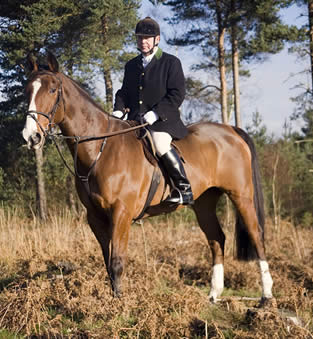 Comments:
Comments:
Bob Milton
It also does not mention that where a horse is frightened or injured by attacking cattle or dogs. Any resulting injury or death of the horse is not reportable to the HSE.
There have been a number of incidents caused by cattle and dogs where the horse has dumped its rider and then galloped into either a road or through a cattle grid resulting in serious injury and death of the horse.
Wisley 2009
horse dumps rider resulting in a broken arm - not reported by land
manger
Hindhead 2000
horse dumps rider and gallops through cattle grid
Mole Valley 2008
lama attacks hoses on a bridleway rider dumped and breaks arm, horses
gallop across A road. Not reported by landowner.
Verity, Eastbourne
Accidents with gates also come under HSE and Occupiers Liability legislation
but these are not recorded unless resulting in personal injury.
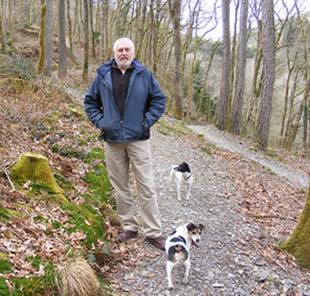 Comments:
Comments:
Clive Williams
"The list of incidents is now dated, and later attacks include one at St Fagans near Cardiff which resulted in the death of a lady, and also the well publicised attack on David Blunket. Unfortunately, I have not had chance to update the list."
"I note two of the attacks which Bob has mentioned were not reported under RIDDOR, even though they resulted in broken arms. The land manager had a statutory duty to report these, and failure to do so is a criminal offence. |f you are able to contact the injured persons, I would suggest that they be informed that they should provide HSE with the details of the incident and the names and addresses of the land managers. HSE will check to see if the matters were reported, and if they have not been, will investigate and take appropriate action."
"If an accident caused by a defective gate causes an injury, the highway authority and landowner need to be informed. Gates are primarily the responsibility of the landowner, and if the injury is serious enough to be reported under RIDDOR, the landowner has a duty to do that as soon as possible. The highway authority has a duty to ensure that gates are in a safe condition and have powers to require defective gates to be repaired or replaced. Claims for compensation often follow these incidents, and these are usually made against the highway authority, but can also be issued against the landowner."
Do you think cattle are dangerous?
Have you been attacked by cattle while riding?
Do you know of any riders who have been attacked by cattle?
Please tell us. The more we help each other, the more we can protect ourselves
